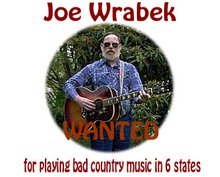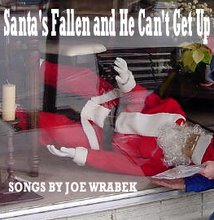Got to play music with the Friday Night Group in Garibaldi this weekend. I hadn’t been by in close to a year, and it was nice to see not much had changed.
Pat, who’s been the group’s sound man and tireless cheerleader, tells the story this way. 6 years ago, he and I and another musician started playing music on Friday nights. Back then, the only live music in Tillamook County was a “jam session” at a local tavern that was dominated by the tavern owner. It was a smoky place, and we knew one lady with a beautiful singing voice (church choir trained) who couldn’t go there because she was allergic to smoke. That meant her husband, one of the better harmonica players I’ve met, wasn’t going there either. It did beg the question how many more people there were like that. We decided there needed to be some place to play music that wasn’t a tavern.
The local hotel let us occupy space in their lobby—and almost immediately, other musicians started showing up. We never publicized—people just told people, who told more people. We outgrew the lobby; the hotel let us have their conference room, and we outgrew that. (By that time, we were starting to get an audience.) We moved to the cafeteria at the old plywood mill, a big barn of a place with tremendous acoustics, and outgrew that, too. We finally landed on the Dance Floor at City Hall (built for the old Firemen’s Balls of the 1940s)—it’ll hold 500 people if they’re friendly.
(We didn’t need that much space—but we did have as many as two dozen musicians showing up on Friday nights, and an audience that might number 100 people. And then the tour buses started stopping by…) I knew we’d arrived when the local taverns—four of them—stopped scheduling anything on Friday nights, because they didn’t have customers. (One of them since started having a live band—on Saturday nights.)
We had three simple but rigid rules. ONE, the audience was irrelevant. Nice that people came, but WE were there to play with each other, not to perform. (That helped pacify the non-professionals who could get weirded out by crowds.) TWO, we did the “circle thing”: we took turns, in order, and nobody got a pass. Your turn, you led a song, and the rest of us would either follow you or stay out of your way. THREE, we shut down at 8 p.m. (playing “Goodnight Irene”) so those musicians who wanted could get to the Dairy Queen for ice cream before it closed at 9.
Pat got the local Lions club to “sponsor” us, so we could be insured if anything happened, and gave us a name—“Asleep at the Switch.” We still weren’t a band, and never pretended to be. Just a bunch of people who got together to play on Friday nights.
The band (oops—not a band) made money, too. Pat started leaving out this ugly wooden llama made out of an old orange crate with a sign that said “Feed the Kitty,” and people put money in it. Rather a lot of money. The band (oops—not a band) ended up with a very sophisticated PA system (needed 2 dozen mike inputs, after all); this year, they got new, very good mikes. They pay the City rent, and repainted the place this year.
So I got to play with ‘em Friday night. They still remembered me (got applause when I walked in, which was nice), and the songs. A few folks aren’t there any more—some died or gone to nursing homes--and there were some new ones. Same eclectic mix of music, from church hymns to barroom blues to ethnic folk dances to old show tunes from the 1920s. And of course, everybody knew everything. Two accordions, three harmonicas, a saw, bass, and the usual run of guitarists, three of whom (including me) could play lead. I’d heard worries that $4.30 gas might cut down on attendance, but there were still only a few empty chairs even in the audience.
With 16 musicians, there was time for only 2 songs each, so they didn’t get any of my new ones. I did the “Welcome to Hebo Waltz,” because Pat wanted to record it for the folks in Hebo, and since Carol (she of the beautiful voice) was back from vacation, “Turn Your Radio On,” my favorite Gospel song, with her doing harmony. People were dancing (it’s a good dance floor).
The lesson? (There’s always a lesson.) If there isn’t a live music scene where you’re at, you can start one. The raw material exists almost everywhere. You just have to coax it out of the woodwork. And you might be surprised.
An additional lesson, for the music industry (which is unlikely to listen). This is a demographic the industry is ignoring—people who don’t buy records, but who can and do pay money to go to live performances. And y’know, there seems to be a lot of them.
So if you’re in Garibaldi, Oregon (pop. 900), on a Friday night, come by City Hall 6 to 8 p.m. There’s music up on the Dance Floor. And there’s probably nothing else happening in town, ‘cause everybody’s up there.
Joe
WELCOME...
This blog is the outgrowth of a songwriting workshop I conducted at the 2006 "Moograss" Bluegrass Festival in Tillamook, Oregon. It presumes that after 30-odd years of writing and playing music, I might have something to contribute that others might take advantage of. If not, it may be at least a record of an entertaining journey, and a list of mistakes others may be able to avoid repeating.
This blog is intended to be updated weekly. In addition to discussions about WRITING, it will discuss PROMOTION--perhaps the biggest challenge for a writer today--as well as provide UPDATES on continuing PROJECTS, dates and venues for CONCERTS as they happen, how and where to get THE LATEST CD, the LINKS to sites where LATEST SONGS are posted, and a way to E-MAIL ME if you've a mind to.
Not all these features will show up right away. Like songwriting itself, this is a work in progress. What isn't here now will be here eventually. Thank you for your interest and your support.
Subscribe to:
Post Comments (Atom)



No comments:
Post a Comment